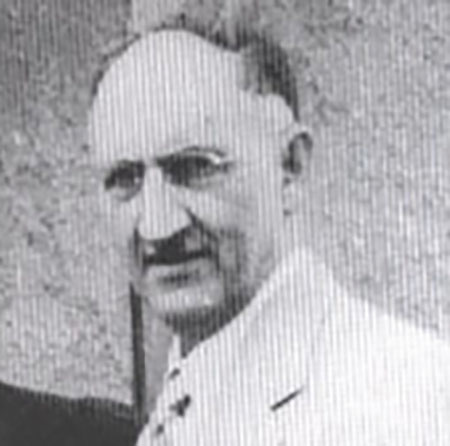
Photo of Jean-Pascal Bonneau, found in the archives of The Ralliements des familles Bonneau
- Year of birth in : Born on March 5, 1895, in Bonneauville, 12 miles east of Willow Bunch, Saskatchewan
- Year of death in : October 16th 1970, Saskatoon Saskatchewan
- Father name : Bonneau Trefflé (1864-1937)* ref.193
- Mother name : Vaudry Marie-Louise
- 1st Wife : Lavallée Estelle
- Marriage : 1917
- Children :
- Bonneau Joseph Hector Albert (1918-1919)
- 2 nd Wife : Dalcourt Gabrielle
- Marriage : February 24th, 1924 at Quebec Montreal, QC
- Children :
- Bonneau Jeannine
- Bonneau Albert
- 3 nd Wife : Roy Lumina
- Marriage : August 16th, 1927
- Children :
- Bonneau Thérèse-Marie
- Bonneau Trefflé Joseph Gérard
- Bonneau Jean-Michel Edgard
- Bonneau Jean Joseph Pascal
- Bonneau Joseph Wilfrid Claude
- Bonneau Marie Antoinette Gabrielle
- Bonneau Joseph Théodore Philias
- Bonneau Marie Liliane Georgette
- Bonneau Marie Corrine Nichole
- Bonneau Marie Elizabeth Colette
- Bonneau Joseph Telesphore Lionel
- Bonneau Marie Albertine Anna
- Bonneau Joseph Maurice Florent
- Bonneau Jospeh Amédée Gilles
- Bonneau Joseph Canut Janvier
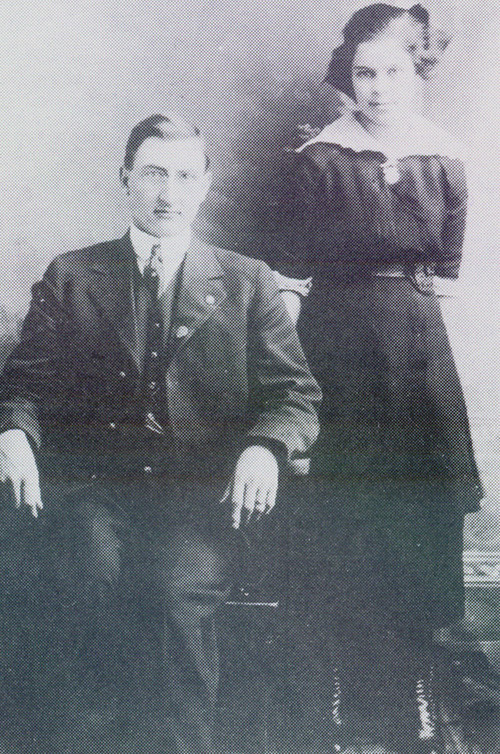
Photo found in the archives of The Ralliements des familles Bonneau. Jean-Pascal Bonneau and Estelle Lavallée his first wife.
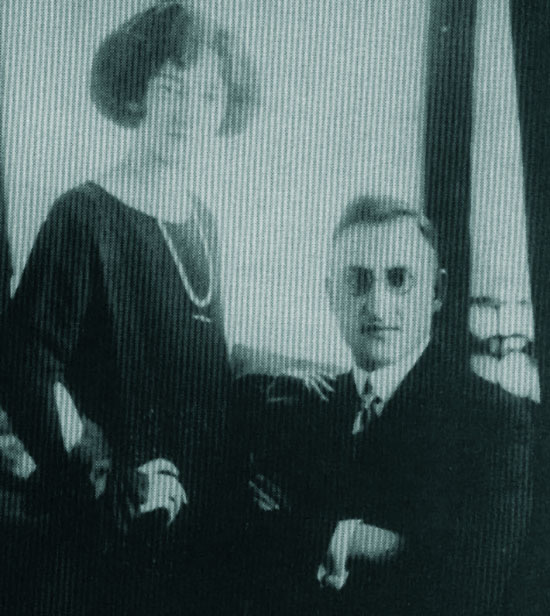
Photo found in the archives of The Ralliements des familles Bonneau. Jean-Pascal Bonneau and Gabrielle Dalcourt his second wife.
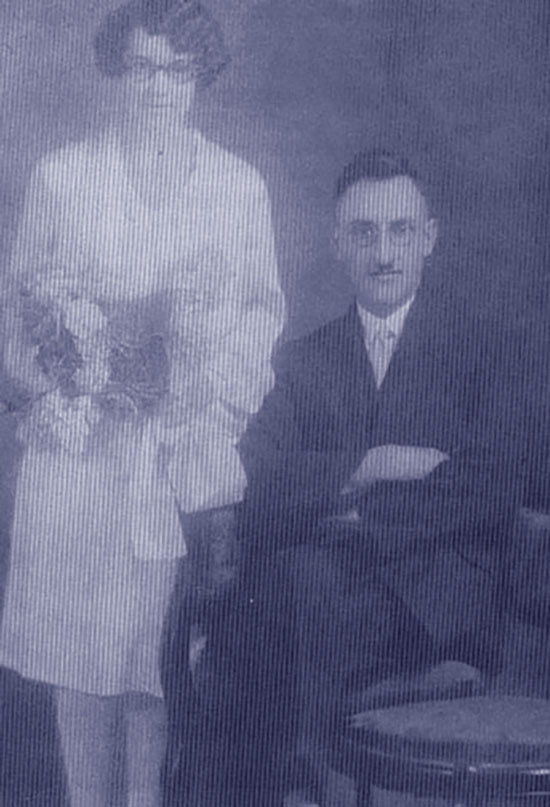
Photo found in the archives of The Ralliements des familles Bonneau. Jean-Pascal Bonneau and Lumina Roy his third wife. Probably in 1927, pic from their marriage.
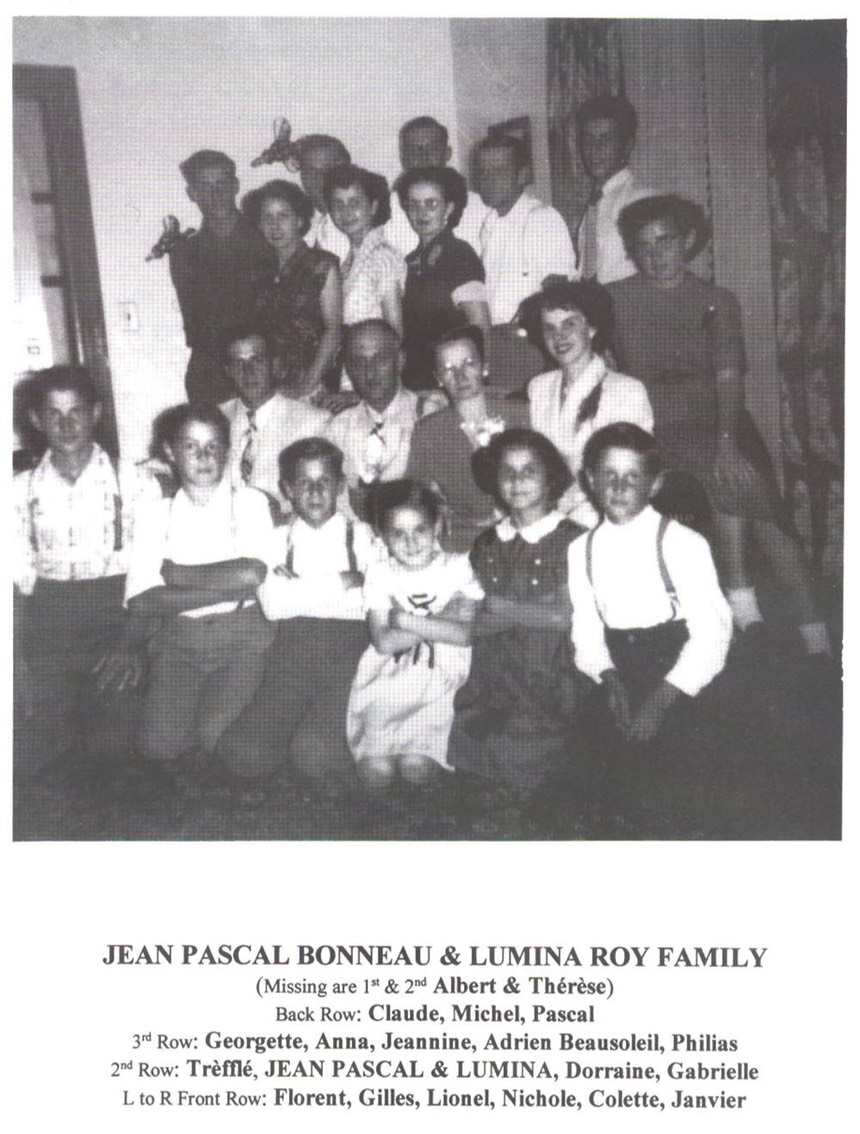
Photo found in the archives of The Ralliements des familles Bonneau. The family of Jean-Pascal Bonneau and Lumina Roy.
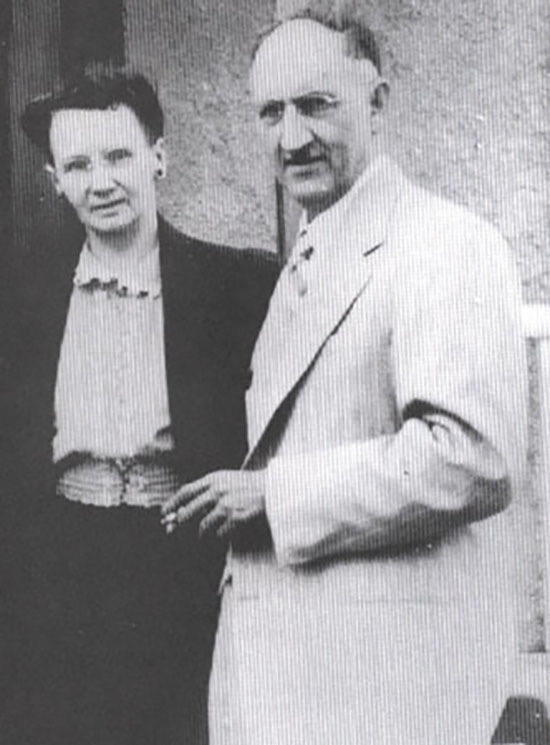
Photo found in the archives of The Ralliements des familles Bonneau. Jean-Pascal Bonneau and Lumina Roy his wife.
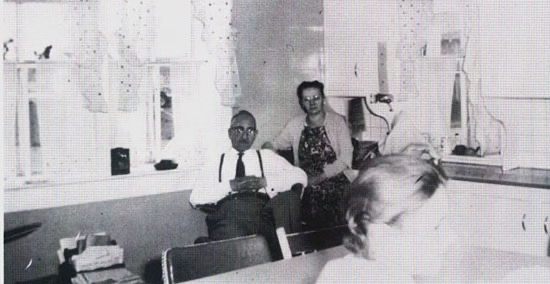
Photo found in the archives of The Ralliements des familles Bonneau. Jean-Pascal Bonneau and Lumina Roy his wife.
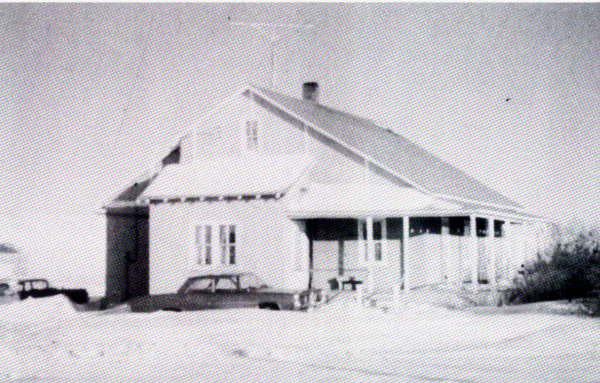
Picture of Jean-Pascal Bonneau and Lumina Roy house in 1964
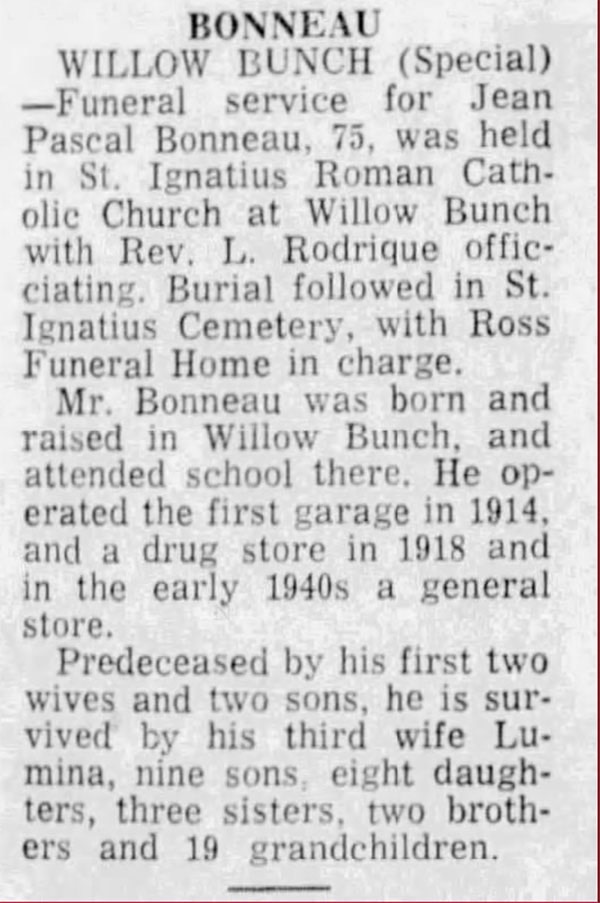

Texte found in the archives of The Ralliement des familles Bonneau
JEAN PASCAL BONNEAU & LUMINA ROY
REFERENCE INFORMATION:
Newspaper Clippings
Word of Mouth
Book: History of Willow Bunch
Jean Pascal Bonneau, son of Trèfflé Bonneau and Marie-Louise Vaudry, was born on March 5, 1895, in Bonneauville, 12 miles east of Willow Bunch, Sask. He had brown hair and brown eyes and lived a full and vigorous life, most of which was spent in the Willow Bunch area. He attended school in Ste.-Boniface, Man., and in Bonneauville, Sask. As a young man, Jean helped operate his fathers General Store in Bonneauville; business, as it turned out, proved to be quite to his liking.
On September 26, 1913, at age 18, he applied for a homestead, the SW 1/4 of Sec. 33, T. 4, R. 27, W2nd, and his patent was approved May 29, 1917. Though Jean acquired much more land later on in life, it appears he sold this land not long after that date.
In 1914 Jean built and operated the first "Auto Repair Garage" in Willow Bunch, on Main street (now 5th Street East). In 1917, he sold this first garage to the Skinner Brothers, Charles and Russell, and under the watchful eye of Dr. Pierre H. Lavallée, he began operating a drug store under the name APHARMACIE CENTRALE@ also on Main Street. It appears this pharmacy may have been situated in a small house which once stood on the same site as the third Imperial Bank of Commerce building (that bank closed on September 6, 1985).
It was during this time in the year 1917, that Jean met, fell in love with and married his first wife, a pretty young lady by the name of Estelle Lavallée, the daughter of Dr. Pierre H. Lavallée & Marie-Louise Joly. As things turned out, theirs was an extremely short marriage, not much more than one year. No sooner had Estelle given birth to their first and only child, a son whom they named Joseph Hector Albert, and she passed away, a victim of the Spanish Influenza which was prevalent during 1918. Sadly, their son Albert (born October 7, 1918) did not fare much better and about nine months later (July 9, 1919), he also passed away of the great fever.
Following this disastrous set of events, due to his lack of knowledge in the pharmaceutical field, Jean sold his drug store enterprise and returned to the garage business. This time, however, his garage endeavour was on a much smaller scale than the previous one, and it was located on a Side-Street. In order to supplement his income, Jean would often do some taxiing with his private car and for several years, he also did some trucking, again with his own truck. Though he was kept rather busy with these many endeavours, Jean still found time to further serve the public. During the years 1922 thru 1926, he served as Councillor for the R.M. of Willow Bunch #42, and thereby on the (then recently established) Willow Bunch Town Council.
It was during these years that Jean met his second wife, a charming young lady by the name of Gabrielle Dalcourt, the daughter of Ludger Dalcourt, who also happened to be a niece of Dr. Lavallée. Their friendship soon turned to romance and on February 12, 1924, Jean and Gabrielle were married in Montréal, Québec. As things turned out, theirs also was an extremely short marriage, not much more than two years. Gabrielle was diagnosed to be suffering from tuberculosis shortly after she became pregnant with their second child. Their first child was a daughter, named Jeannine. The doctors of the day, with their limited knowledge, recommended she spend some time down East as they considered the climate there to be better for her condition. Nevertheless, shortly before her due date, Gabrielle decided to return out West to be with her husband. Tragedy, however, struck again on January 27, 1926, and very few days after giving birth to a son, Albert, Gabrielle Dalcourt passed away, a victim of her ailment.
Following this second disaster Jean was left in an urgent kind of predicament, for though no longer a married man, being as he had two motherless children to care for, neither was he alone. Fortunately for all concerned, Jean was not a quitter and, after an appropriate period of mourning, he soon had the belle of the area on his arm! She was a pretty, petite and charming young lady by the name of Lumina Roy, the daughter of Amédée Roy & Mathilda Mathieu who had migrated from Québec to Willow Bunch in 1910.
Lumina, who was born on February 23, 1905 (registered on the 24th), in St.-Prospère-de-Dorchester, Québec, received her education at the Sacred Heart Convent in Willow Bunch. Prior to working in her father=s Clothing Store, Lumina spent some time working for Mrs. Jutras (as an assistant cook), at the Manoir Hotel in Willow Bunch. She always claimed Mrs. Jutras was a fine cook, and that she learned a lot from her in that department.
Jean, it seems, would often go to visit Lumina while she was at work in her father's clothing store, which as it turned out, is where a lot of their courting was done. They spent many an hour just talking and romancing, as there was time between customers, and Jean seemed to find more and more time to linger there!
Lumina had several other suitors of course, but to her Jean was that special someone, and they would no longer be kept apart. Though there was a bit of an age difference, she was 22 and he was 32, they felt their love for each other could stand the test of time, and on August 16, 1927, Jean Pascal Bonneau and Lumina Roy were married! As Mother recalled that day, it was a beautiful and bright summer day, the likes of which remains in one's memory for a lifetime.
During the years that followed, Jean continued to do mechanical work in his small garage, truck cattle, grain, coal, etc., and drive his taxi until the early 1940s. He then decided to give-up taxiing and trucking to concentrate his efforts on the retail business. To this end, he purchased larger premises on 5th Street East, in Willow Bunch, with room enough to operate a General Store, have gasoline pumps out front, and a garage stall in the rear.
It was not a highly profitable venture, due to the amount of credit required by customers, and hard times, but with careful administration Jean and Lumina managed to survive and in the interim raise a large family. In total, counting the two children from Jean's previous marriage (which Lumina raised), their family consisted of eight girls and ten boys.
All of their children, except for the last two, Colette and Nichole, were born at home. In a sense even they were born in a private home, that of their Grandfather Trèfflé Bonneau, which from 1943-46 served as an interim hospital for Willow Bunch and area. (The previously existing private hospital had burned to the ground April 18, 1934.) With such a large family, and so many things needing to be done, one can rest assured that Lumina did not have much time for rest and recuperation following the birth of a child.
During the depression years, 1929-1939, times were very hard and one can easily visualize the hardships endured, though certainly not a dull moment. In fact, at one point things got so financially tight that Jean actually kept his car up on blocks, in his garage, for two years. Finally, in desperate need of money for the family to survive, he sold his much cherished car!
To appreciate the effort required to do even the simplest things during those early years, one need only consider the type of conveniences at hand. The convection heating system consisted of a coal & wood-fired furnace, and the large kitchen cook-stove was of the same caliber. Coal from the local mines, and hand cut wood, was painstakingly brought down into the basement each fall, to be accessible during the winter months. Though fortunate enough to have electricity in the house, it was of the 32 volt vintage (until 1955 when 110 volt power was accessed). Such electricity was supplied by a generator installed upon a 45 foot windmill, complemented by several wet-type batteries in the basement. This mode of electricity had to be used sparingly in order to lengthen the life of the batteries. Notwithstanding, for several early years, a foot cranked gasoline engine was used to operate the washing-machine, that is, when one could start the blessed thing! Later a 32 volt electric wash-machine was purchased. However, if the wind was not blowing sufficiently to operate the windmill, a gas powered generator had to be called into service as the standby batteries would not last long at full load.
The plumbing consisted of one lone cold-water faucet by the kitchen sink, which was accompanied by a small hand pump utilized to fetch soft water from the large cistern beneath. Waste waster from the sink drained into a cesspool, which often froze over in the winter months, requiring a standby pail under the sink! The bathroom, which was furnished with a big white enamelled cast-iron claw-foot tub (no plumbing at all), was adorned with a wooden throne Athe toilet@ with a pail inside, and Eaton=s Catalogue standing by. Taking a bath on Saturday night was something one had to prepare for, as water had to be heated in a boiler on the coal stove (no hot water tank), and gotten to before others did! Understandably, pressure was always on everyone to use the outside toilet as much as possible. Needless to say, during the winter months trips were kept at a minimum and as short as humanly possible!
There was no phone, the radio was of the six volt battery caliber (used sparingly to save the batteries), and a cherished gramophone in the living-room was operated by a hand-cranked spring.
With such a large family organization was always of paramount importance, and one can rest assured Lumina became an expert at it. She was an excellent cook, and could whip-up a meal in two minutes flat, with what seemed to be from nothing! The children helped one another, despite a few skirmishes now and then, and hand-me-downs were the order of the day. During the summer holidays, a hole in one's shoe was simply patched over from within, with a cardboard cut-out of one's foot. Without a doubt, this must be where the term "soft shoe" originated! Most certainly one gained a new respect for stones after such a repair job, but it worked, and no one is the worse for wear!
There was no fridge or freezer in the house until around 1955, and thus until that time a root cellar was of paramount importance for the storing of vegetables and other staples, especially during the summer months. During the winter months, many perishables could be kept in a cold storage cupboard, situated outside by the back door of the house. As for meat, it could usually be stored imbedded in grain. The grain served as an excellent insulator, and it kept the meat frozen for some time after the warm weather had returned. Of course, the exact location in which the meat had been inserted into the grain had to be marked, otherwise it could be lost and not found again until late summer, or when the bin was emptied. Though this type of loss did not occur very often, it would invariably be anything but a pleasant find in the hot summer!
Canning was another method which was used to preserve meat for extended periods and, if the process was successful, the end result tasted real good. Fruits for canning were always purchased by the case lot, and the jars used for a family of this size were of the two quart size. On a good year when there were lots of Saskatoons growing in the bush, the whole family would go out on a Sunday afternoon and pick an abundance of them. They would then be canned and saved for a future regalement in the middle of winter. One should bear in mind that all this canning was done on the surface of the old coal and wood stove, in the middle of the hot summer. No Airconditioning was available in those days, so it was not a cool task at the best of times. That same stove was also used to bake bread every other week, prepare the daily meals, heat the water needed for daily use in a fixed boiler along its side, and warm up the most aptly named "Sad Irons" to do the ironing. (No permapress in those days.)
When there was a little time to spare, Lumina, who was an excellent seamstress, could be found sewing or knitting such things as sweaters and mittens for the little girls. She enjoyed her time spent knitting, and the girls were always more than pleased to get a new sweater or mittens, all their own! Mother also spent many so called leisure hours mending and altering clothes, which would be ritually passed down from the older to the younger children. And, nightgowns and bed-sheets would be made from materials scrounged from used flour or sugar bags.
In fact, it was not beyond Lumina to go and milk the cows if need be, or to stoke the fires at 6.00 a.m. on cold winter mornings so everyone could wake up in a warm house. No complaints on her part!
In the days when most of the children were still at home, entertainment was not usually much of a problem. Company consisted more of receiving friends, as opposed to visiting them with such a large family, for a game of cards and to discuss the current problems of the day. As a young man, Jean used to play the mouth organ, and Lumina could (when she found the time) play the piano relatively well. Alas, however, it appears that none of their children can play an instrument, and neither are there any songsters or songstresses in the group!
Notwithstanding, as the years took their toll Lumina's health began to fail, and the work load got to be a little more than she could handle. Some of the children had to be sent to boarding schools, even for their primary years of education. The boarding schools the children attended were: St-Joseph's Academy in Forget, Sask., and Le Jardin de L'Enfance and College Mathieu both in Gravelbourg, Sask. Initially the fee charged for board and room at these schools was $6.00 per month, per child. Unfortunately, though such an amount seems trivial today, many families then could not afford it!
Though life in the Boarding Schools was not all that difficult for the children, it was not very conducive to learning any of the social skills which would be so necessary later in life. For the most part, the boys and girls were kept separated by both, a six foot high hedge, and a wire fence which ran parallel to it and could be found on each side of the hedge. The mentality of the times was such that if anyone misbehaved in class, their punishment would very likely require they be seated "quietly" beside a member of the opposite sex! If they seemed to enjoy their predicament, they were moved. Actually it was even a problem to visit with one's own sister/brother, which only added mystery and appeal to such contacts.
Throughout the years, due to schooling away from home and other factors, family members were seldom, if ever, all at home at the same time. To an extent it was quite fortunate, for it might have been somewhat overcrowded in the bedrooms on such occasions. Yet, Mother and Dad owned several different houses throughout the years, and each consecutive house was larger than the previous, save their retirement home which was downsized. From 1941 to 1965 they lived in their largest home, a huge four bedroom affair which was 40' by 50' and it, if need be, could have accommodated their 18 children should they all have shown up at the same time! Also, that house had a veranda on the south side, which ran the full length of the house and half way across the west side; it was put to good use by the children, especially on muddy days.
To be sure, it took organization at the best of times to accommodate everyone, and the stacking of bunk beds was inevitable. And, though there are many blessings to be enjoyed by members of a large family, the much cherished luxury of individual attention was seldom one of them!
Around 1944, just as the second world war was nearing its end, Jean and Lumina purchased a half section of land for the grand sum of $6,000. The second eldest son, Trèfflé, then 18 years of age, ran the farm for them, but in later years he took-up ranching. As they could afforded it, they continued (in the footsteps of Jean=s father) to purchase land with the intention of settling as many of the boys into farming as possible. They would make the down payment, and let the boys take over from there to meet the payments and improving the holdings. Farm machinery was too expensive for each to own individually, so the boys would combine their efforts with that of their father, and by farming together and sharing the expenses maximum use was made of the existing machinery.
ITEM WORTHY OF MENTION: Jeannine and Thérèse, two of the elder children in the family, say they remember seeing a revolver which Dad and Mom kept hidden in a dresser drawer in their bedroom. It appears they snooped there once or twice! According to Mother, that revolver was a memento of Dad=s brother, Albert Bonneau, which he had on his person on the battle field in France at the time of his untimely death. Presumably Uncle Albert liked that weapon, for some of his army friends sent it to Dad following his demise. Unfortunately, according to Mother, there came a period about the time of the Second World War when the government of the day insisted all weapons be registered. However, rather than registering the weapon, and for safeties sake, Dad destroyed it. It would have been a nice souvenir to have at this time, but, gone is gone.
In 1965, at age 70, Jean retired and sold his General Store to an entrepreneur by the name of Ronald Cayer, also of W.B. That same year, through the efforts of their son Claude, Jean and Lumina built themselves a small retirement home on 5th Street East in Willow Bunch. During the ensuing years Jean enjoyed a well deserved rest, and though his health had by then deteriorated somewhat, he loved to oversee the yard and garden work.
(Their big old house was sold to Monique (Tougas) Dumonçeau on August 20, 1966. They occupied it for about five years, and it was demolished in 1973.)
Alas on October 16, 1970, following an operation to remove an aneurysm plaguing a main artery, Jean Pascal Bonneau passed away in Saskatoon, Sask., at age 75, a victim of his ailment. Truly, here was a man who felt satisfied he had accomplished all he could and, though now departed, he most certainly is not forgotten!
Lumina, on the other hand, lived another 22 and a half years, to the grand old age of 87 years and 11 months. She resided in her own home until July, 1983, when she moved into an apartment adjacent to (and owned by) her son Gilles, on 5th Street East in W.B. Unfortunately, her health was not the best and she deeply regretted the near loss of her sight, due to cataracts in both eyes. Yet, despite numerous other physical ailments and many days filled with pain and exhaustion, she never complained.
Lumina invariably listened to the news, which she later discussed with those present, expressed a keen interest in political matters, and eagerly listened to hockey and football games. She also enjoyed playing cribbage and, even with failing eyesight, she struggled to see the numbers and to do her own counting.
She always held an unwavering faith in the Lord Jesus Christ, which sustained her through unimaginable hardships as her life unfolded. Lumina was a staunch supporter of her church and of several charities which she favoured, as well as two young men whom she supported through their studies to become priests.
Alas, on Saturday, January 23, 1993, after several months of failing health, Lumina (Roy) Bonneau passed away in her apartment at 2:30 a.m. About an hour before her passing, Mother asked to be helped to her chair in the livingroom as her heart ached, and she had trouble breathing lying down. As Colette and Georgette helped her along and I, Gilles, followed with the oxygen machine, Mother whispered (in French), AIf only He would come for me, I keep asking Him, but He doesn=t come.@ At a lost for words, the girls carried on quietly and I, in my mind, said to myself AI must not lie to her.@ All of a sudden these words blurted from my mouth, with as much certainty as if the Lord himself had said them, ABe patient Mother, He will come,@ to which Mother replied with surprise, AOh, it=s alright then,@ and carried on to her chair. And there she sat quietly, Colette by her side, laboring for every breath till mid-hour when she asked Colette for a glass of water. But, before Colette could return with water, Mother had freely answered her Master=s call and, most mercifully, passed away. Imagine that, after all that trouble she just - so very quietly - slipped away - and our hearts surely went with her! Goodby precious little lady, until we meet again. And we shall.
Mother will always be sadly missed by all who knew her, and forever remain in the hearts and minds of her children, 33 grandchildren and numerous great-grandchildren. She and Jean Pascal are buried in the Catholic Cemetery east of W.B. (On the north side of the entrance, 2nd row from the bottom, several sites north.)
NOTE OF INTEREST: In the fall of 1991, Robert and Wilfred Picard (sons of Lucienne (Girard) Picard, daughter of Victoria (Bonneau) Girard, daughter of Pascal Bonneau Sr.) came to Willow Bunch to meet Lumina for the first time. They were quite impressed with her stature, she being a small person of about 4' 8", and found her to be an exceptionally gracious little lady, bright and so very full of life! At first it seemed somewhat difficult for them to fathom how this little person had endured those inescapable hardships of pioneer life, and survived the many problems encountered while raising such a large family. Yet, Lumina did do it, and she accomplished all without help of the many conveniences everyone now so readily takes for granted!
The writer, Gilles A. Bonneau, met Robert and Wilfred upon their visit to Willow Bunch and can say without hesitation, that they showed themselves to be true gentlemen, and a credit to the memory of their mother Lucienne, their grandmother Victoria, and their great-grandfather Pascal Sr.
Recherches : Bonneau Louise (1969 - )*ref.540